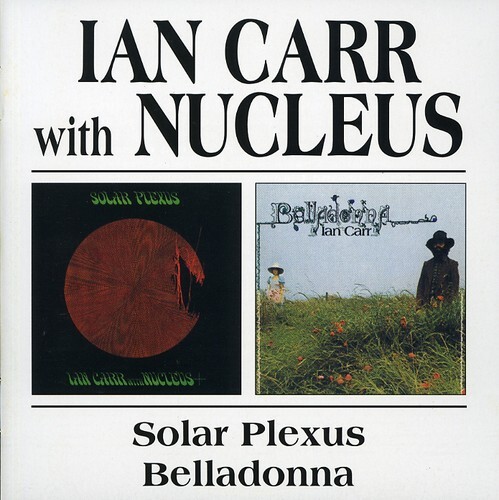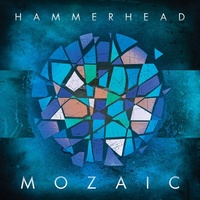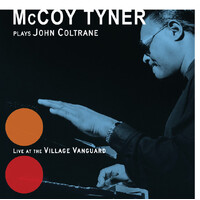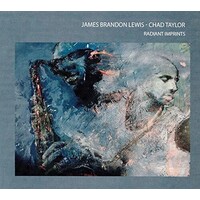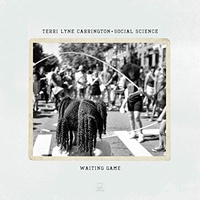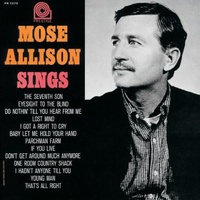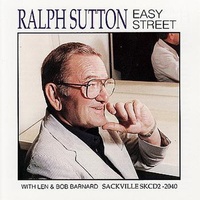Digitally remastered British Jazz Classics. 2 original early 70's Vertigo albums reissued on 2CDs.
Trumpeter Ian Carr's Belladonna was issued in 1972, following three acclaimed Vortex outings by his Nucleus ensemble -- 1970's Elastic Rock and We'll Talk About It Later, and 1971's Solar Plexus. The original Nucleus had dissolved: multi-instrumentalist Karl Jenkins and drummer John Marshall joined Soft Machine, bassist Jeff Clyne left for Isotope, and Chris Spedding for session work. For Belladonna, the financially strapped Carr recruited pianist Dave MacRae, pre-Soft Machine bassist Roy Babbington, drummer Clive Thacker, Gordon Beck on Wurlitzer, and percussionist Trevor Tomkins. The album introduced the masses to future guitar hero Allan Holdsworth. Reed and wind player Brian Smith was the only remaining Nucleus member besides Carr. Nucleus' previous outings seemingly reveled in the tensions that existed between jazz improvisation and rock's forceful dynamics; Belladonna, by contrast, fully integrates them. While inspirational blueprints for this album include Miles Davis' seminal In a Silent Way, this music deliberately employs more accessible and conventional jazz harmonics and circular time-keeping, despite its abstractions.
The 13-plus-minute title-track opener offers nebulous dissonance from the percussion instruments and wafting sinister tones from a Wurlitzer and Fender Rhodes in the intro. Carr's muted trumpet introduces a call-and-response Eastern modal theme. The band respond sparsely and ambiguously at first, until Babbington's bassline picks up the theme and guides the band into funky terrain. Holdsworth vamps and comps with wah-wah pedals while Beck's and MacRae's contrasting keyboards offer stellar interplay. Carr and Smith trade fine solos and Holdsworth's rhythm playing is wildly inventive. "Summer Rain," by contrast, is laid-back. MacRae's Rhodes echoes the sound of droplets hammering at windows, as the bassline roves between a shuffling drum kit and syncopated, yet tandem horns as Holdsworth offers bluesy, psychedelic fills behind the piano. The guitarist gets to flex his still-developing muscles for a few moments on "Remadione." Though it also begins with a gauzily wafting flute, tinkling Rhodes, and tapped cymbals, it kicks in full force with a funky bassline and breakbeat snare as the guitarist starts cutting in with distorted arpeggio blues lines. Beck and MacRae respond with empathy and enough sass to urge him on. "Mayday" offers momentary abstraction in its intro as Carr and Smith deliver a punchy vamp with expressionist backing from keys, drums, and guitar, while Babbington's physical bassline keeps it grounded. The horns meet Holdsworth's steely, Shaft-esque wah-wah pedal with grit and groove. The seer musicality in closer "Hector's House" recalls the example of Herbie Hancock's Mwandishi band as Smith's soprano and Carr's horn wind around one another with loping harmonies and eventually, canny, interlocking solos that approach swinging post-bop. Holdsworth cuts loose with an incendiary, fleet solo that melds jazz improv, psych, prog rock, and bluesy hard bop. In sum, Belladonna isn't merely a fine album, it's a great one. Carr, in transition and somewhat financially dire straits, remains capable of enthralling listeners with a highly individual concept of jazz-rock fusion that makes no compromises either in quality or creative imagination.
AllMusic Review by Thom Jurek
On ‘Solar Plexus’ the all-star lineup (which reads like a who?s who of British jazz) includes Kenny Wheeler, Harry Beckett, Brian Smith, Tony Roberts, Karl Jenkins and Chris Spedding.
Ian Carr was working on this project even before the birth of Nucleus, as this was some kind of musical grant from England's Art council and under the patronage of Keith Winter (who incidentally will toy away with a VCS3 on these recordings). But as Carr was composing on a piano, it became clear to him that only Nucleus musicians could play what he was writing. If Ian Carr had only written 5 of 18 tracks over the two first Nucleus albums, he writes all of the material here
The project was to have two totally different themes, toy/expand them and then fused them altogether in the final track. However ambitious this was (especially for the times), this is only partially successful (IMHO) but also produces some great moments. The two themes are presented in the first tracks as Elements I & II, than the first one becomes very funky jazz rock in the second track and in the fifth track and the other element is developed in track 3 (with a great bowed double bass to start of and very subtle eastern music influences to follow) and 4 (Spirit Level is close to Free Jazz but fear not, nothing as Harsh as in KC's Moonchild or Providence, as it stays relatively wise).
But both elements are to be fused into Snakehips' Dream to last for the 15 min+ with an eerie ending on the afore-mentioned VCS3. There are some lengths in the developments and some repetitions, but overall this is yet another great Nucleus recording.
Sean Trane
(5017261205667)
| SKU | 5017261205667 |
| Barcode # | 5017261205667 |
| Brand | BGO Records |
Be The First To Review This Product!
Help other Birdland Records users shop smarter by writing reviews for products you have purchased.

